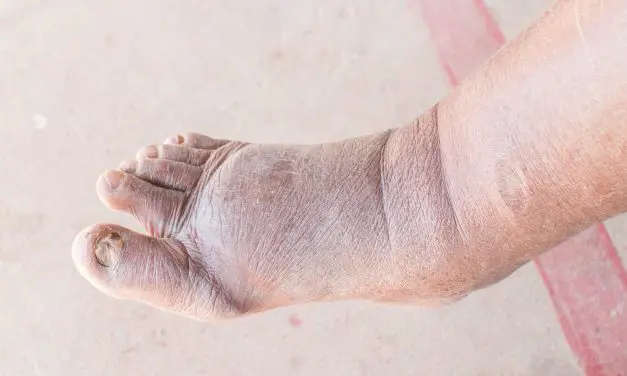PEMFs for Healing Diabetic Foot Ulcers
Table of Contents

Diabetes is an increasing problem around the world. Vascular disease is one of the most common complications of diabetes. Because of this, wound healing in diabetics is a major health challenge. Short of curing and reversing diabetes, managing the complications such as foot ulcers is difficult. However, it would be much improved by the use of such technologies as pulsed electromagnetic fields (PEMFs). Because of the diabetic vascular disease and wound healing problems, 15% of diabetics eventually develop the disastrous and disabling problem of a foot ulcer, which, in 12% to 24% of cases, requires amputation.
Diabetes is the leading cause of non-injury-related lower leg and foot amputations in the United States. PEMF therapy initiated early in someone’s history of diabetes can be useful to prevent the development of vascular complications. Even if or when vascular problems become obvious, higher intensity local PEMF therapy should be strongly considered.
PEMFS PROMOTE WHITE BLOOD CELLS TO HEAL
Significant experimental scientific evidence has shown that PEMF therapy:
- Encourages white blood cells to heal the endothelium (the linings of blood vessels)
- Stimulates angiogenesis (the growth of new blood vessels) when there are blockages of blood vessels
- Boosts the rapid growth of myofibroblasts and keratinocytes (cells necessary to build new blood vessels)
- Improves the symptoms of diabetic peripheral neuropathy
- Promotes diabetic wound healinHuman studies have shown that full body PEMFs stimulate mononuclear cells (tissue rebuilding cells) that promote angiogenesis and healing of chronic foot ulcers.
PEMF STUDY OF DIABETIC FOOT ULCER HEALING
A study (Cañedo-Dorantes et al., 2015) was done to evaluate the use of specific PEMFs applied indirectly to different parts of the body to induce healing of diabetic foot ulcers. The study also evaluated whether exposing different volumes of circulating blood to electromagnetic fields would produce better results.
Procedure
In the study, 26 diabetics whose diabetic foot ulcers had not been helped by conventional treatments were divided into groups. There was a forearm group and a chest group—to receive treatment and record healing time. In both groups, 120 Hz sinusoidal wave PEMFs were applied twice a week for about 14 weeks or until complete healing was seen.
The forearm group received 8 gauss (0.8 milli-tesla) for 2 hours per treatment. The chest group received 6 gauss (0.6 milli-tesla) for 25 minutes per treatment. (Gauss and tesla are units that measure the strength of magnetic fields.)
Ulcer recurrences and adverse effects were investigated during short-term (less than 1 year) and long-term (3.4 years to 7.8 years) follow-up.
Results
Healing time ranged from 28 days to 94 days (mean, 61 days) in the forearm group, and 34 days to 92 days (mean, 63 days) in the chest group. By the end of the 100-day treatment period, 88% of the diabetic foot ulcers in the forearm group were healed and 94% in the chest group.
There were no adverse effects or ulcer recurrences in the original ulcer site during treatment, during the short-term follow-up period, or during the long-term follow-up period in both groups. All participants with diabetic foot ulcers that healed during the study and were examined 3.4 to 7.8 years after treatment ended continued to show healed ulcer areas regardless of their electromagnetic stimulation regime or individual characteristics.
The size of the pool of circulating blood treated (chest versus forearm) did not appear to matter even though the treatment time for the chest was only 20% of the forearm time. Also, it’s quite possible that higher intensity PEMFs would have produced even better results.
Comparing the Healing Rates of PEMFs to Other Diabetic Ulcer Therapies
It would be helpful to have a sense of how well other therapies work versus PEMFs. Various studies have shown the following results:
- Silver dressings: 22% to 31%
- Graft materials: 30% to 56%
- Platelet concentrates: 79%
- Casting: 82% to 95%
- PEMF therapy: 88% to 94%
Because each of these studies used different treatment periods, it’s easiest to speak about the percentage of healing during the time of the study. Most of these studies used 84 days for the study period; others used 56 days and 43 days. So, even the indirect approach to healing diabetic foot ulcers with these PEMFs produced a healing benefit comparable to—or better than—conventional therapies. This suggests common physiologic effects that result in the healing action.
Further Evidence Supporting PEMF Therapy
Moreover, recent evidence suggests that PEMFs stimulate certain cell receptors known as adenosine receptors. These are on most types of white blood cells. White blood cells are needed to decrease inflammation and stimulate tissue healing. This research indicates that the optimal PEMF intensity to stimulate white blood cells is about 15 gauss (1.5 milli-tesla). So, stimulating white blood cells in the circulation can still impact ulcers away from the area of stimulation. It can also be expected that PEMF treatment of an ulcer directly, with or without whole body treatment, would get even better results and faster.
Conclusion
Nonetheless, routine whole body PEMF treatment is advisable for every diabetic. It can prevent or reduce vascular complications using a sufficient electromagnetic field intensity to adequately and routinely stimulate circulating white blood cells.